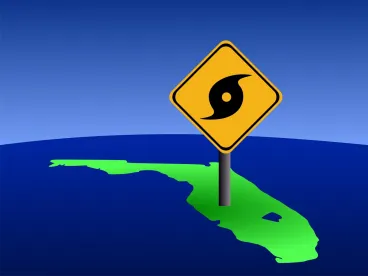On August 24, 1992, Hurricane Andrew made landfall in Homestead, Florida as a Category 4 hurricane. At the time, it was the third most intense hurricane that ever struck the United States. Andrew had sustained winds of 149 mph and gusts of up to 169 mph, with a storm surge of 17 feet at landfall. Andrew inflicted devastating damage throughout Florida and elsewhere, causing 23 deaths and property damage in the billions. Andrew’s ferocity has since been dwarfed by storms like Katrina and Maria, which caused much greater loss of life and property damage. But unlike the latter storms, Andrew was the catalyst for sweeping changes in the Florida Building Code that imposed, among other things, stronger minimum design loads for new buildings and structures, and imposed requirements to protect against wind borne debris.
While Andrew led to needed changes and the imposition of standards for the design and construction of new buildings in high wind zones, there is precious little in the codes or other authorities that establish minimum standards for the protection of projects that are under construction when a hurricane strikes. Construction sites are uniquely vulnerable to destruction of the project itself, and of surrounding persons and property. Unfinished structures are susceptible to damage or collapse; building materials are subject to damage or destruction; and loose materials, tools, and equipment that are part of every construction project can become missiles that cause untold property damage to neighboring buildings; or worse, injury or death to nearby persons. The absence of uniform standards for securing building sites during hurricanes leave it to owners and contractors to decide the scope and extent of hurricane preparedness. Not surprisingly, the efficacy of hurricane preparedness plans can vary widely: from non-existent, to thoughtfully detailed and executed.
This is not a trivial matter. The geographical area that is exposed to hurricanes includes most of the eastern seaboard and the Gulf coast of the United States. These regions encompass some of the largest population centers and most active construction markets in the country. Between 2010 and 2015, there were 93 named storms, of which 41 were named hurricanes. Since then, Hurricanes Harvey, Irma, Maria, and Michael have wreaked havoc in Texas, Puerto Rico, and Florida. Katrina and Harvey each caused about $125 billion in total damages. Maria has so far caused about $91 billion of losses, and Sandy and Irma each caused about $65 billion in total losses. There is not much published data on the amount of losses sustained on unfinished construction projects. One report concluded that Sandy caused $185 million in damages to the World Trade Center construction site. But, it is important to understand that damages are not limited to property losses. Hurricanes can result in changed conditions, delays in procurement, and reductions in labor productivity that inevitably delay completion and increase the costs of construction.
The good news is that hurricanes are predictable and confined to a known (though large) geographical area. Usually, there are days of notice before a hurricane strikes, which allows for the implementation of preparedness plans. In short, the case for having effective hurricane preparedness plans and properly executing them is manifest. This paper will discuss the minimum recommended elements for hurricane preparedness plans and address some of the legal issues that arise before and after “the storm strikes.”




 />i
/>i

